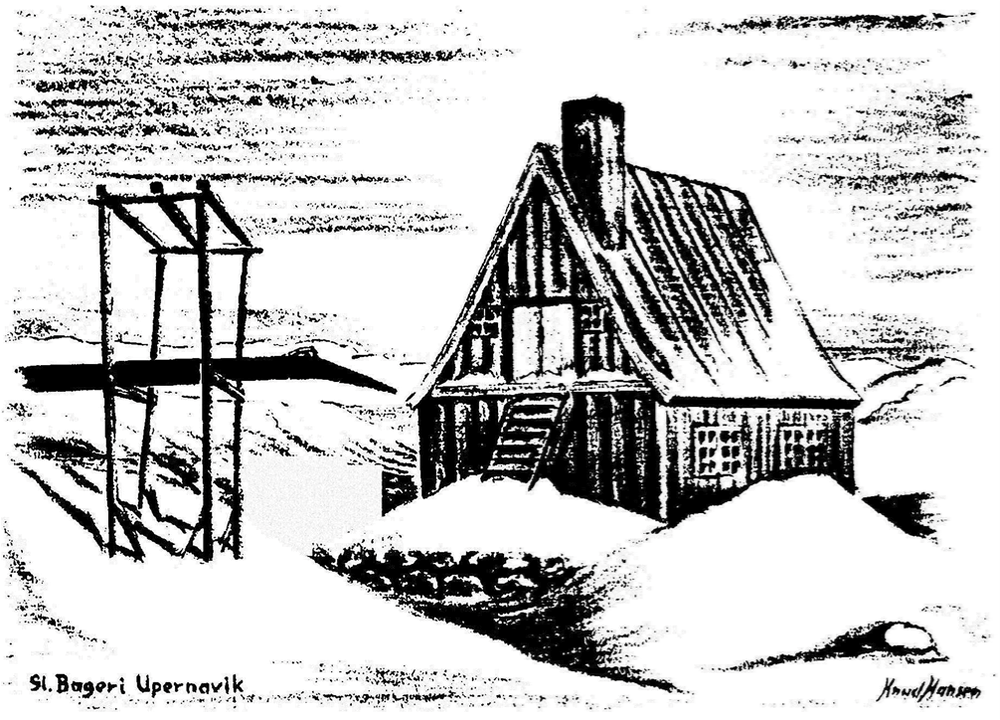Refugium Upernavik
During the restoration of the buildings in the old part of the town, the town council decided that the old cooper’s shop should be established as an artist’s residence. Since the construction in 1848 the building has been domicile for craftsmen: During the 19. Century, it was the cooper who manufactured the barrels for storing and transportation of the oil from seals and whales in the house. Later on the building has been domicile for the baker who used it for the making of various delicacies.
Today, after the restoration, the outside of the house stands as original. Among the original details is the pointed roof. Indoor one will find a small and modern flat containing a living room, bedroom, kitchen and bathroom. The house is perfect for 1-2 persons, but if people know each other well it is possible to be more. In this way it is the intention that artists, who come to live in the house, will be given comfortable and pleasant surroundings and thereby will have the best conditions for working with art or possibly writing.
Upernavik is the main town in the municipality which today includes 11 settlements of various sizes. Until the 1980’ies the main way to make a living in the municipality was the traditional hunting way of life. During the 1980’ies this picture changed though, and today one will see that the fishing for Greenland halibut has raised the standard of living everywhere. In Upernavik town, where the retreat is situated, one still sees the transition from hunting to fishing: Dogs and skidoo each have their advantages and disadvantages, but they both draw the traditional sledge whether it is loaded with seals or Greenland halibuts. The houses in the town also indicate changing demands on size and comfort through times.
The contrasts between older and recent times are not the only ones to be seen here. Also the nature provides for great contrasts: Chalk-white icebergs and grey and black gneiss- and basalt rocks makes, together with the sea, most of the scenery. The vegetation is scattered, but rich coloured if one looks carefully between the rocks. The biggest contrast though is constituted by the seasons in the high-arctic climate: During the summer the sun does not leave the sky for three months, leaving the people completely in charge of day and night. In this period many people change day and night about – but what does it matter, as long as one makes it to the shop before closing time.
Contrary to the summertime, the darkness of the winter to many southerners seems like a terrible and nasty time lying in wait. But whenever one gets accustomed to the darkness it proves to be a peaceful time that leaves the time for absorption that one usually lacks. During this period the moon is an important source of light when walking on the ice, and all over a starry sky unfolds that is unique to the arctic night.



